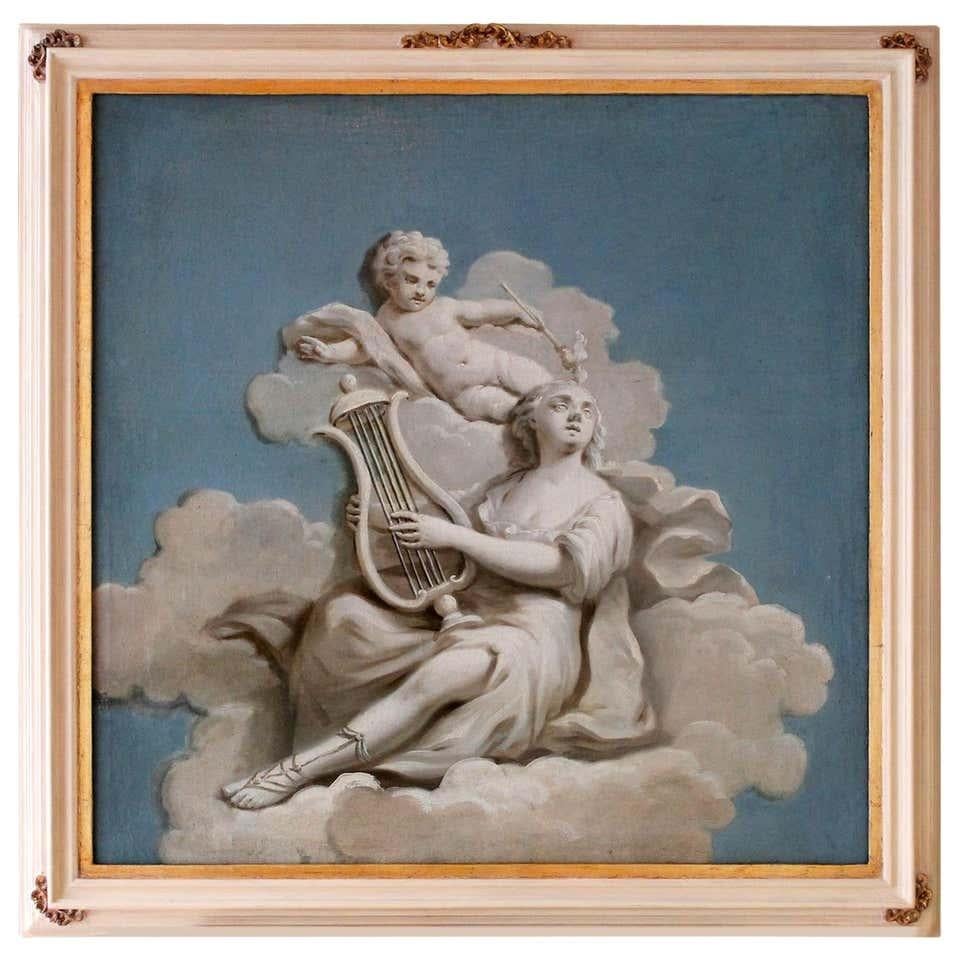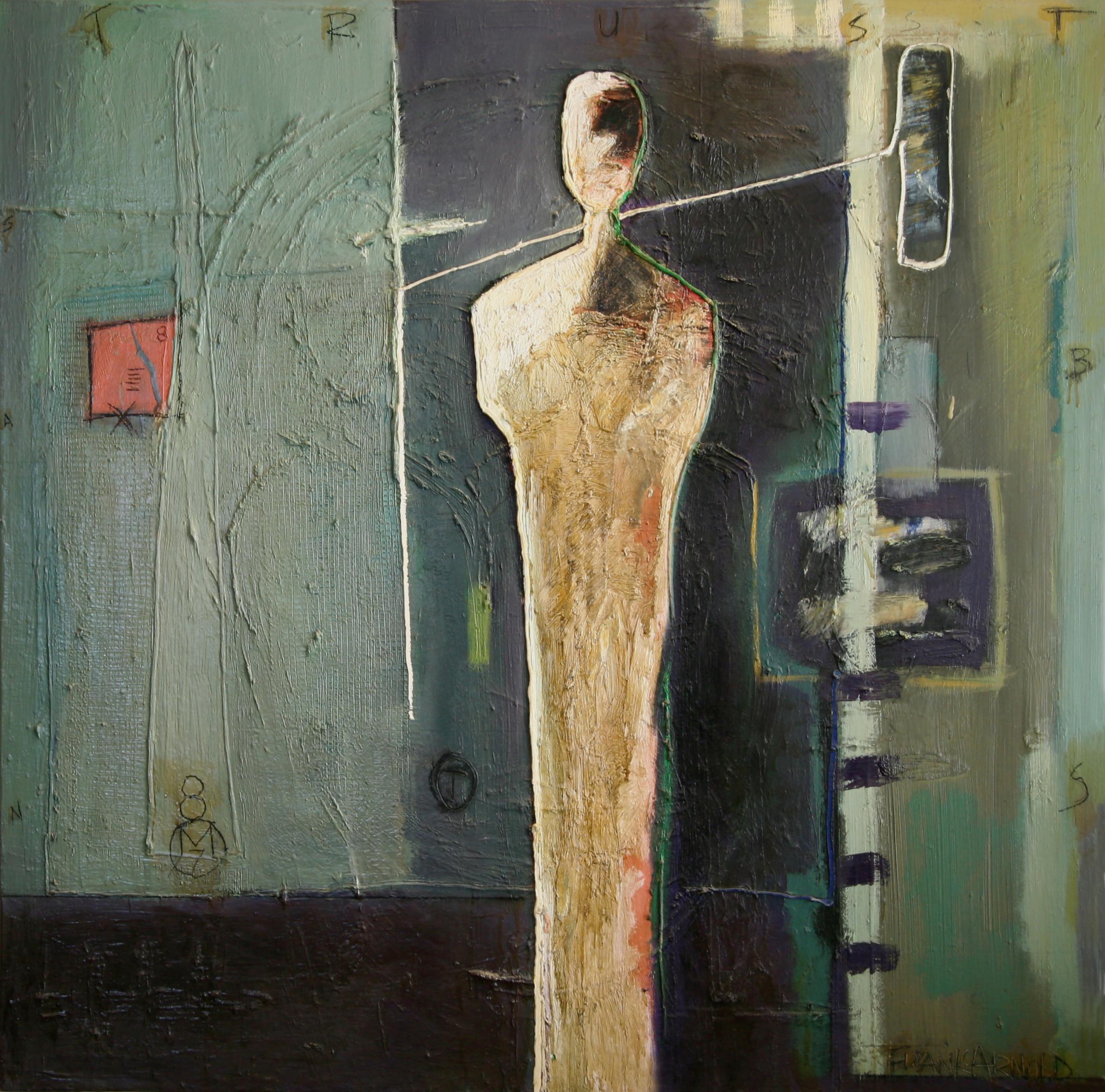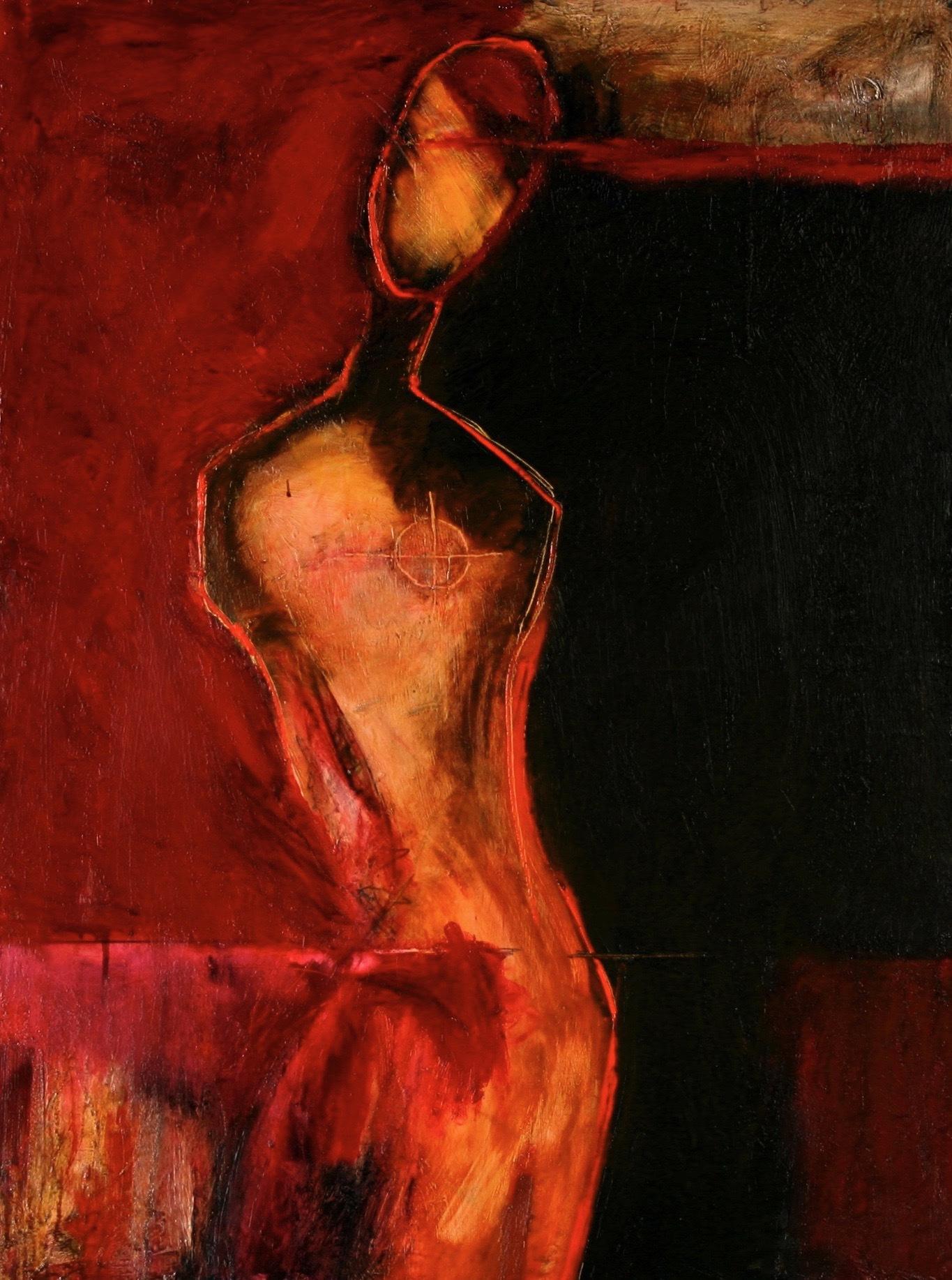Items Similar to Camp scenes Pair of paintings Angela Maria Pittetti known as Palanca
Want more images or videos?
Request additional images or videos from the seller
1 of 24
Angela Maria Pittetti detta PalancaCamp scenes Pair of paintings Angela Maria Pittetti known as Palanca
About the Item
Angela Maria Pittetti known as Palanca (Palancato, 1690 - Turin, 1763)
Hunting rest
Camp scene
(2) Oil on canvas, 85 x 66 cm - with frame 90 x 71 x 4 cm
A work of Piedmontese scope, the pair of canvases, given the manifest stylistic and formal consonances, highlights the hand of Angela Maria Pittetti, known as Palanca, one of the most interesting pictorial personalities of the Piedmontese 1700s. A remarkably talented artist, she was one of the best pupils of the great bambocciate painter Pietro Domenico Ollivero, whose numerous pupils are recorded in the sources of the time; some as famous as Graneri and precisely Palanca.
Pittetti, a native of a small town above Varallo Sesia, Palancato (a hamlet of Boccioleto), hence the nickname Palanca, was born into a family dedicated to the arts, owning a workshop where they made and worked wood and ivory objects. When she married very young, in 1711, she must have already been an esteemed painter since her dowry, also subscribed to by Ollivero, contains no less than 165 paintings, sketches and sketches. The marriage was destined not to last long; in fact, in 1716 she, in a very courageous decision for those times, left her abusive husband and returned to live in Turin. He was soon to specialize in interesting genre scenes, where there is no lack of French influence, characterized by the presence of ladies, gentlemen, knights or so-called bambocciate scenes for which the master was also famous, in which there is always evidence of deep research and attention to clothing, costume, the fashion of the time, and details such as hairstyles, all combined with a special attention to poses and gestures that give great vitality and freshness to his work. Pittetti was an esteemed and in-demand painter who was not without important commissions, as evidenced by a number of payment receipts for paintings done for the Palazzina di Caccia in Stupinigi.
Angela Maria Pittetti's painting is always easily recognizable for her precise stylistic code. Indeed, the artist essentially painted delightful French-style genre scenes, but declined in a more ironic Italian version. In addition to the influences of Pietro Domenico Ollivero, those of Scipione Cignaroli, Domenico Gambone, and Carlo Filippo Brambilla are also very evident in his canvases; as well as those of Italianizing Flemings, such as Teodor Helmbreker and Pietro Maurizio Bolkman. Pittetti's creativity also found cues from the works of Watteau and Teniers, as well as those of Jean-Baptiste Oudry and certain canvases by Natoire.
His works, as in those analyzed, one can trace a meticulous completeness and attention to detail, with vaporous backgrounds that hark back to the coeval French tradition as an idea, along with Cignaroli as a rendering. In the pair of works examined there are links to the mundane features typical of his pictorial production, such as attention to contemporary fashion, particularly evident in the lady portrayed in the foreground while resting from hunting, and to narrative gestures. The two scenes, set in two different contexts, one related to the activities of the aristocracy, with the hunting party, and the other to a bivouac scene in an encampment, are united by the common gesture of the toast declined in one case, quietly, by the delicate damsel in the foreground, energetically instead by the soldier portrayed from behind.
The works, studied here, present many stylistic elements of Pittetti's composite world, expressed with delicate, elegant grace and countless points of contact with known works by the painter. Worth mentioning are the works that the painter executed for the Palazzina Reale of Stupinigi, where the presence of the lady harnessing a firearm recurs, surrounded by the faithful a pack of dogs, or the works in private collections where, Palaca's stylistic hallmark, her typical elongated and raised figures return as protagonists among the crowd that in part remains more anonymous.
- Creator:Angela Maria Pittetti detta Palanca (1690 - 1763, Italian)
- Dimensions:Height: 35.44 in (90 cm)Width: 27.96 in (71 cm)
- Medium:
- Period:
- Condition:
- Gallery Location:Milan, IT
- Reference Number:1stDibs: LU2639213033662
About the Seller
No Reviews Yet
Vetted Seller
These experienced sellers undergo a comprehensive evaluation by our team of in-house experts.
1stDibs seller since 2023
- ShippingRetrieving quote...Ships From: Milan, Italy
- Return PolicyA return for this item may be initiated within 14 days of delivery.
More From This SellerView All
- Battle scene Oil painting on canvas Attributed to Karel BreydelBy Karel BreydelLocated in Milan, ITAttr. to Karel Breydel, known as the Knight of Antwerp (1678 - 1733) Battle with knights and landscape in the background Oil on canvas, cm 44.5 X 36.7 Frame 52.5 x 45 cm The pain...Category
Late 18th Century Figurative Paintings
MaterialsCanvas, Paint, Oil
- Still life with fruits on a shelf Oil painting on canvas Paolo PaolettiLocated in Milan, ITPaolo Paoletti (Padua, 1671 - Udine, 1735) Still life with fruits on a shelf Oil on canvas, 53.5 x 81 cm Expert opinion Dr. Gianluca Bocchi The still life under consideration can...Category
18th Century Figurative Paintings
MaterialsCanvas, Paint, Oil
- Presentation of Mary in the Temple Oil on canvas Scope of Pietro BardellinoBy Pietro BardellinoLocated in Milan, ITScope of Pietro Bardellino (1728-1806), circa 1760s Presentation of Mary in the Temple Oil on canvas, 163 x 150 cm With frame, cm 166 x 152 Dealt with in the proto-gospel of James, an apocryphal gospel, Mary's presentation to the temple remains to this day one of the most moving Marian artistic episodes. The moment figured here, in which the little Virgin is encouraged to the high priest by her nobly determined mother Anna, encapsulates a composition harmoniously cradled between Baroque and Classicism. All present turned in amazement to observe the young woman's unexpected entry into the sacred premises, while a direct light detached her figure from the soft incensed air. This strong expressive naturalness, added to the clear formal concreteness used by the artist, intoxicates the painting with the academicism already belonging to Francesco Solimena and Giacomo del Po, on a par with the greatest Neapolitan masters. The thoughtful consistency with which the artist organizes the luminous and tangible colors also formalizes his dependence on Pietro Bardellino, a distinguished exponent of the first Rococo investigations on Neapolitan soil. Committed from his youth to the great hall of the Farmacia degli Incurabili, Bardellino turned to the Oratory of the Confraternity of the Whites of the Holy Spirit, working at the same time for Bitonto Cathedral. Appointed a member of the Academy of Fine Arts, he was recalled there as an active collaborator by Vanvitelli himself, in 1773. A debtor in turn to the style of Francesco de Mura, his master, by the mid-18th century Bardellino was already registered as a fresco painter at the main royal residences of Ferdinand IV of Bourbon, reaching the pinnacle of his success there in 1781 with the commission to fresco The Virtues Crowning Ferdinand IV and Maria Carolina on the huge ceiling of the Grand Hall of the Palazzo dei Regi Studi in Naples (later to become the Royal Bourbon Museum used in our days as the National Archaeological Museum of Naples). This evidence allowed him to become a master in the technique of fresco painting, boasted therefore at several noble residences, among the interiors of which it is possible to recall those of Cellamare, Ischitella and Spinelli di Fuscaldo. A coloristic lucidity, similar to that which shines in the present, returns in Bardellino's late works, now exhibited in the old apartment of the Reggia di Caserta (Science and the Arts, Peace and War, Innocence, Simplicity, Truth, Day and Night), albeit colder, due to the artist's adoption of the northern European art trends fashionable at the court of the Bourbon consort Maria Carolina, also influencing Corrado Giaquinto...Category
18th Century and Earlier Figurative Paintings
MaterialsCanvas, Paint, Oil
- Jacob's departure for the land of Canaan Canvas from the Grechetto WorkshopLocated in Milan, ITWorkshop of Gio Benedetto Castiglione called the Grechetto (Genoa, March 23, 1609 - Mantua, May 5, 1664) Jacob's departure for the land of Canaan Oil on canvas, 80 x 115 cm - Fra...Category
17th Century Figurative Paintings
MaterialsOil, Canvas
- Game of bowls Oil painting on canvas by Domenico OliveroLocated in Milan, ITDomenico Olivero (Turin, August 1, 1679 - January 13, 1755) Game of bowls Oil on canvas, 43 x 65 cm With frame, 54.5 x 76 Expert opinion Prof. Alberto Crispo The painting shown here depicts peasants playing bowls near a farmhouse, while one of them offers sweets to a little girl. The canvas, in my opinion, can be traced back to the hand of Pietro Domenico Olivero (Turin, August 1, 1679 - January 13, 1755), as revealed by comparisons with other works by the artist, such as the Peasants' Feast already at the Gilberto Zabert Gallery in Turin, where we find an entirely similar layout, with the figures crowded around the building, placed on the left, and some household goods piled up on the right, including a copper cauldron almost identical to the one sketched in our painting. But see also other similar subjects painted by the Turin-based artist, such as the Game of Bowls already at the Cantore Gallery in Modena or the other version on the Genoese market in 2019, which, although radically different compositionally, confirm the painter's interest in playful themes and manifest the same ways in delineating characters, with synthetic and robust brushstrokes. The artist was born in Turin, in the parish of St. Thomas, on August 1, 1679 to Giovanna and Francesco, a carver by profession. He trained at the workshop of the painter and architect Melchiorre Baldassarre Bianco. He was esteemed by Victor Amadeus II of Savoy, who commissioned paintings for the Venaria Reale (1714), the Royal Palace of Turin (1716), and Rivoli Castle (1724), as well as by his ministers Pietro Mellarède and Carlo Vincenzo Ferrero di Roasio marquis of Ormea whose collections counted many of the painter's works. His success on the Turin art scene earned him election as prior of the Accademia di San Luca in Turin (1726). In 1731 he painted the eleven canvases with Stories of Franciscan Saints in the sacristy of the church of St. Thomas in Turin, while in 1734 he made the Marriage at Cana for the sanctuary of Oropa. The Savoy commissions continued with the ten canvases executed for the castle of Agliè (1737), the decoration of the third room of the New Archives in the Royal Palace of Turin (1739-41), and the thirty or so works for the hunting lodge at Stupinigi (1748-51). The painter also measured himself in designing sets for the Teatro Regio in Turin (1745-46). He made his will on November 15, 1754, and died in his hometown on January 13, 1755. Olivero's genre scenes, such as the one commented on here, reveal a focus on Flemish painting, particularly by David Teniers the Younger, Peter Mauritz Bolckman, Theodor Helmbreker, and Cornelis de Wael, as well as Roman bamboozlers such as Pieter van Laer, Michelangelo Cerquozzi, and Jan Miel...Category
18th Century Figurative Paintings
MaterialsCanvas, Paint, Oil
- Madonna and Child with Saints Oil on canvas Giovanni Balducci known as CosciLocated in Milan, ITGiovanni Balducci known as Cosci (Florence, 1560-Naples, 1631) Madonna and Child, St. John, St. Joseph and St. Elizabeth Oil on canvas, 120 x 110 cm The Madonna and Child, well-li...Category
17th Century Figurative Paintings
MaterialsCanvas, Paint, Oil
You May Also Like
- French 19th Century Oil on Canvas Blue and White Music Allegory Cherub PaintingLocated in Firenze, ITThis romantic French 19th century allegoric oil painting on square canvas has a sky blue background, a fluffy cloud fills the central part of the painting where a woman is lying down playing the lyre, while a graceful cherub seems to twirl over her. This oil on canvas painting represents the allegory of music - with a woman dressed in classical clothes and a putto- a very popular theme during all the neoclassical age, with its lively scene inspired by the Rococo period. The composition creates a awesome trompe-l'œil effect thanks to the color palette scheme. Well painted white and gray shadings (chiaro scuro) that stands out from the light blue background in typical grisaille style. This painting originally was an over door frieze...Category
19th Century Rococo Figurative Paintings
MaterialsCanvas, Oil
- Italian 18th Century Oval Religious Oil on Canvas Painting with Saint DominicBy Francesco de MuraLocated in Firenze, ITThis beautiful Italian 18th Century old masters oil painting on oval canvas with giltwood frame is attributed to Solimena and features a religious scene. In this splendid oval-shaped painting are depicted Saint Dominic...Category
18th Century Old Masters Figurative Paintings
MaterialsOil, Canvas
- Italian Oil on Canvas Painting Coat of Arms in Gold Leaves Panel and Black FrameLocated in Firenze, ITThis huge Italian 19th century armorial painting features the coat of arms of Montini, a noble Italian family that has among its ancestors the Archbishop of Milan, later known as Pope Paul VI. The large oval canvas has a brown and red background, the latter shaped like a shield, in which six mountains (from the etymology of the surname) and three white fleur de lis are painted. This big scale palatial oil painting...Category
Late 19th Century Italian School Figurative Paintings
MaterialsOil, Canvas, Wood
- Oil on Canvas “BS Trust”By Frank ArnoldLocated in Fresno, CA“BS Trust” is 36” x 36”. Frank Arnold’s paintings exhibit the highest quality materials for a truly archival piece, created to last generations. Much of Frank Arnold’s work is sourc...Category
2010s Abstract Abstract Paintings
MaterialsCanvas, Oil
- Last DanceBy Frank ArnoldLocated in Fresno, CALast Dance is an Oil on Canvas painting in soft, light aqua tones with red/brown accents. Frank Arnold is thought by many to be one of the foremost abstract...Category
2010s Abstract Abstract Paintings
MaterialsCanvas, Oil
- My Other SideBy Frank ArnoldLocated in Fresno, CA“My Other Side” is 48”x 36”. This is an earlier piece by Arnold from the estate of a late collector of his work. This piece is predominantly shades of red from light to almost black....Category
Early 2000s Abstract Abstract Paintings
MaterialsCanvas, Oil
Recently Viewed
View AllMore Ways To Browse
Schwung Cloud
Suzanne Sable
Victor Elford
Vintage Fan O War
Vintage Paul Bunyan
Vintage Veg Sign
Willy Nelson
18thc 19thc Oil Paintings
1901 Hamilton Watch
Adam Pattern Picture Frame
Adm Cooper
Adriaenssens Fernand
Af Tait
Alan Lambirth On Sale
Alexandre Briganti On Sale
All Swatch Watches Ever Made
Angelica Meerson
Ann Taube Goodman




